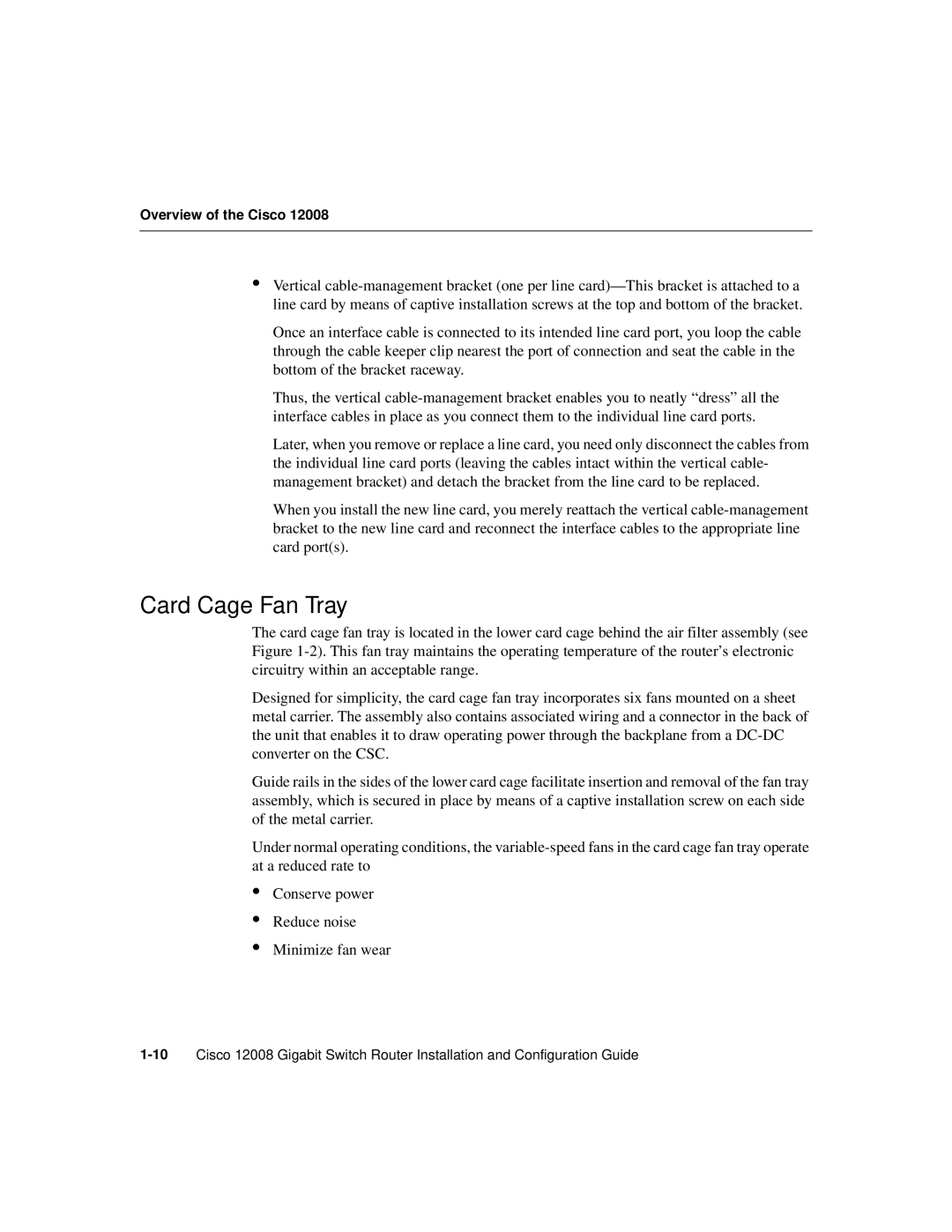Overview of the Cisco 12008
•Vertical
Once an interface cable is connected to its intended line card port, you loop the cable through the cable keeper clip nearest the port of connection and seat the cable in the bottom of the bracket raceway.
Thus, the vertical
Later, when you remove or replace a line card, you need only disconnect the cables from the individual line card ports (leaving the cables intact within the vertical cable- management bracket) and detach the bracket from the line card to be replaced.
When you install the new line card, you merely reattach the vertical
Card Cage Fan Tray
The card cage fan tray is located in the lower card cage behind the air filter assembly (see Figure
Designed for simplicity, the card cage fan tray incorporates six fans mounted on a sheet metal carrier. The assembly also contains associated wiring and a connector in the back of the unit that enables it to draw operating power through the backplane from a
Guide rails in the sides of the lower card cage facilitate insertion and removal of the fan tray assembly, which is secured in place by means of a captive installation screw on each side of the metal carrier.
Under normal operating conditions, the
•
•
•
Conserve power
Reduce noise
Minimize fan wear
